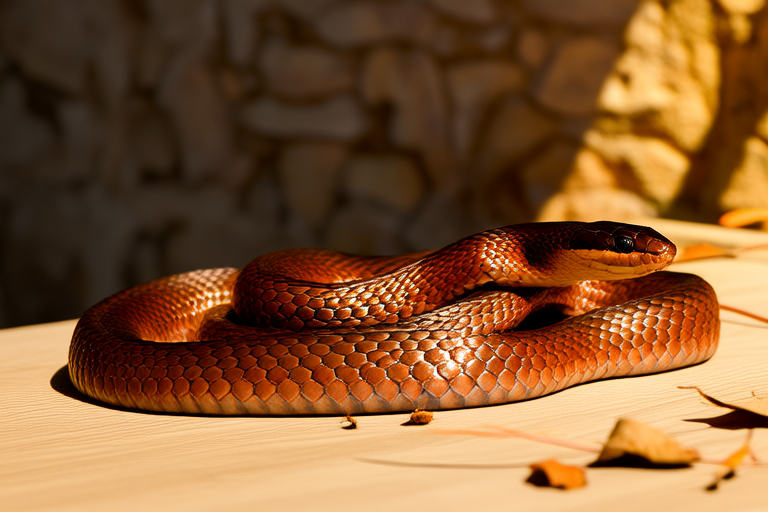The Ultimate Guide to Corn Snake Care: Tips from Expert Breeders
Introduction
Welcome to the ultimate guide to corn snake care! Whether you’re a first-time snake owner or an experienced breeder, this comprehensive resource will provide you with all the information you need to ensure your corn snake thrives. Corn snakes (Pantherophis guttatus) are popular pets due to their docile nature, vibrant colors, and ease of care. This guide will cover everything from housing and diet to handling and breeding, offering valuable insights from expert breeders.
Housing
Choosing the Right Enclosure
- Select an appropriately sized enclosure that provides ample space for your corn snake to move around comfortably.
- A glass terrarium with a secure lid is ideal for maintaining proper humidity levels and allowing visual inspection.
- Ensure there are no gaps between the lid and the enclosure to prevent escape.
Substrate and Decorations
- Use a substrate that promotes hygiene and prevents skin irritation. Shredded aspen, reptile carpet, or newspaper are safe options.
- Incorporate hiding spots, climbing structures, and branches to stimulate natural behaviors.
- Provide a water dish large enough for soaking but shallow enough to prevent drowning.
Diet
Nutritional Requirements
- Corn snakes are carnivorous and require a diet primarily consisting of rodents such as mice or rats.
- Feed juveniles every 5-7 days and adults once every 10-14 days.
- Ensure prey items are appropriately sized; the width should be no larger than the widest part of the snake’s body.
Feeding Techniques
- Warm the food item to room temperature before feeding to make it more appealing.
- Handle your snake gently after feeding to avoid regurgitation.
- Monitor your snake’s weight and adjust feeding frequency as needed.
Handling
Proper Handling Techniques
- Support the snake’s entire body when handling to prevent stress and injury.
- Avoid sudden movements or excessive handling, especially during shedding periods.
- Establish a consistent routine to help your snake become comfortable with handling.
Health Care
Common Health Issues
- Respiratory infections can occur if temperatures and humidity levels are not properly maintained.
- Dehydration can lead to mouth rot, which requires immediate veterinary attention.
- Mites and ticks can cause discomfort and transmit diseases; regular inspections are crucial.
Veterinary Care
- Choose a veterinarian specializing in exotic animals for annual check-ups and emergency care.
- Be prepared to quarantine new additions to prevent the spread of parasites or illnesses.
- Learn basic first aid techniques for minor injuries or emergencies.
Temperature and Humidity Requirements
Thermoregulation
- Maintain a temperature gradient within the enclosure, with one end warmer than the other.
- Provide a basking spot at 88-92°F (31-33°C) and a cooler area around 75-80°F (24-27°C).
- Use a reliable thermometer to monitor temperature variations throughout the day.
Humidity Levels
- Keep humidity levels between 40% and 60% to promote healthy shedding.
- Use a hygrometer to measure humidity accurately.
- Provide a humid hide box filled with damp moss or sphagnum peat moss.
Breeding Tips
Preparation for Breeding
- Ensure both male and female corn snakes are healthy and well-fed before introducing them.
- Condition the snakes by providing a cool-down period followed by a gradual warming process.
- Monitor the snakes closely during breeding to prevent aggression or injury.
Egg Incubation
- Prepare an incubator with vermiculite or perlite and water to maintain optimal humidity.
- Incubate eggs at 80-85°F (27-29°C) for approximately 60-70 days.
- Check regularly for signs of hatching and prepare a separate enclosure for neonates.
Common Mistakes to Avoid
- Overfeeding can lead to obesity and health problems.
- Improper temperature and humidity settings can result in respiratory issues or poor shedding.
- Ignoring signs of illness can exacerbate conditions and require more intensive treatment.
Expert Advice
Insights from Breeders
Experts share their experiences and recommendations:
“It’s important to establish a routine and stick to it. Consistency helps reduce stress and promotes overall well-being,” says Jane Doe, a seasoned breeder.
Another breeder, John Smith, emphasizes the importance of research. “Take the time to learn about your snake’s specific needs before making any decisions.”
Personal Experiences
Many breeders have encountered challenges but also rewarding moments. “Watching a snake successfully shed for the first time is incredibly satisfying,” reflects Emily Brown.
Conclusion
Caring for a corn snake requires dedication, knowledge, and attention to detail. By following the guidelines outlined in this ultimate guide, you’ll be well-equipped to provide a happy, healthy environment for your pet. Remember, each snake is unique, so observe your pet closely and adapt care practices accordingly. With the right approach, you’ll enjoy many years of companionship with your corn snake.
